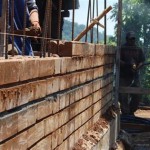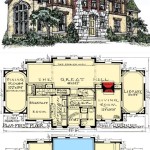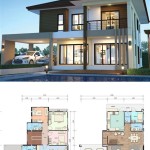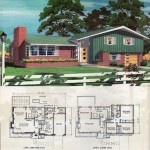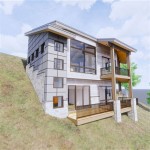House Plans for Sloping Lots: Essential Considerations
Building a house on a sloping lot can present unique challenges, but it also offers opportunities for creating a visually stunning and functional living space. To ensure a successful build, careful planning and consideration of the following essential aspects are crucial:
Site Assessment and Drainage
Thoroughly assess the slope of the land, including its angle, elevation changes, and drainage patterns. Conduct soil tests to determine the stability and suitability for construction. Plan for proper drainage systems, such as French drains or terraces, to prevent water accumulation and erosion.
Foundation Design
The foundation is vital for supporting the house on a sloping lot. Choose a foundation type that is suitable for the slope and soil conditions, such as a pier and beam foundation. This type of foundation distributes the load evenly and accommodates changes in elevation.
Floor Plan Layout
Design a floor plan that takes advantage of the slope and views. Consider a split-level or terraced layout to create multiple levels, providing access to different outdoor areas and scenic views. Position the main living areas on the uphill side for panoramic vistas.
Exterior Design
The exterior design should complement the slope and surrounding landscape. Use materials and finishes that blend seamlessly with the natural environment. Consider using retaining walls, patios, and decks to create tiered levels and expand usable outdoor space.
Energy Efficiency
Sloping lots can provide opportunities for natural ventilation and passive solar heating. Orient the house to maximize natural light and cross-breezes. Incorporate energy-efficient windows, doors, and insulation to reduce energy consumption.
Access and Circulation
Ensure convenient access to the house and parking areas. Plan for pathways, stairs, or even elevators to facilitate movement between different levels. Consider the slope when designing driveways and entrances to avoid excessive grading.
Safety Features
Prioritize safety on a sloping lot. Install railings, handrails, and non-slip surfaces to prevent falls. Consider lighting along pathways and steps for nighttime navigation. Implement erosion control measures and plant vegetation to stabilize the soil and prevent landslides.
Additional Considerations
When planning house plans for sloping lots, remember the following additional considerations:
- Landscaping: Utilize native plants and terraced landscaping to enhance the visual appeal and stabilize the slope.
- Building Codes: Comply with local building codes and regulations specific to sloping lots.
- Geotechnical Engineer: Consult with a geotechnical engineer to assess the stability and potential hazards of the slope.
- Contractor: Hire an experienced contractor who is familiar with building on sloping lots.
- Cost: Building on a sloping lot may incur additional costs for excavation, retaining walls, and specialized foundations.
By carefully considering these essential aspects, homeowners can create a house on a sloping lot that combines style, functionality, and safety. Embrace the unique opportunities presented by the slope and work with professionals to design a home that complements the environment and enhances your living experience.

A Guide To Sloping Lot House Plans

House Plans For A Sloped Lot Dfd Blog

Sloping Lot Contemporary Style House Plan 1100 Sundown

A Guide To Sloping Lot House Plans

Modern House Plan Sloping Lot Contemporary Style 5590 Vista Plans

Duplex For A Down Sloping Lot 8188lb Architectural Designs House Plans

Plan 64452sc House For A Rear Sloping Lot Architectural Design Plans Architecture

Small House Plan Ch58 Building Plans Images And Floor

Plan 053h 0018 The House

Pin On Floor Plans W Suite

